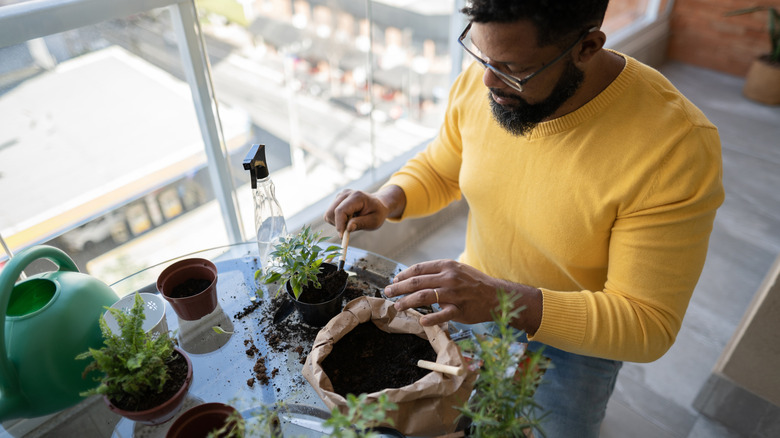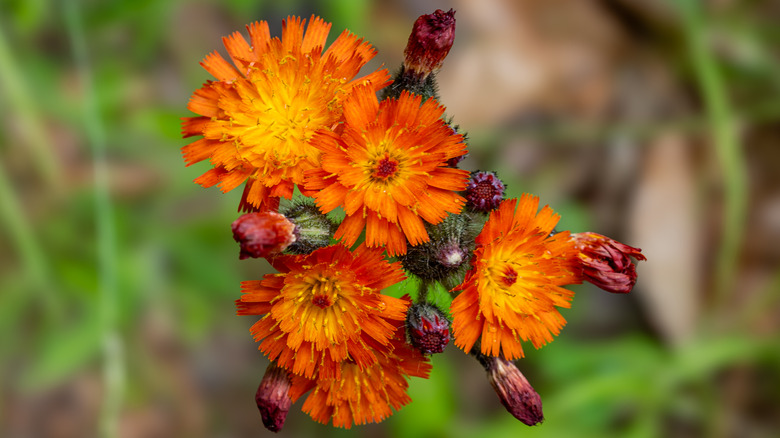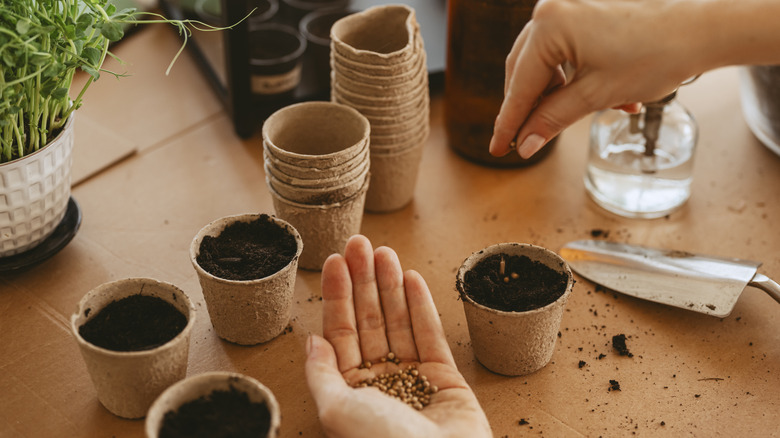The One Weed Worth Responsibly Growing In A Container Garden
Container gardening is blooming in popularity these days. It's a flexible way to grow flowers, vegetables, and herbs when space is limited, but going beyond the most obvious choices could give an ornamental garden in pots a unique look. Herbs that spread aggressively, such as mint, are already smart options for this type of gardening, so why not use the contained space as an opportunity to enjoy beautiful, but invasive plants responsibly? Orange hawkweed (Pilosella aurantiaca) is a flower you'd immediately regret growing in your yard or garden since it's invasive and known to crowd out native species. Planting it in containers, however, means you can enjoy its delightful pop of red-orange petals in a safe way.
Orange hawkweed can grow up to 2 feet high and produces clusters that can bear around 30 small red-orange flowers from June through September. This perennial has hairy leaves that are closer to the base of the plant. The hairy seed heads that linger after the flowering season have given inspiration to some of the plant's other colorful common names, including fox-and-cubs and devil's paintbrush. It belongs to the same family as sunflowers.
Grow orange hawkweed safely in containers
When the shallow roots of orange hawkweed are housed in a container indoors, they won't be able to take over a garden. The same hardiness that makes the plant a detriment to the ecosystem in the wild can make it easy to grow them in a variety of conditions. Orange hawkweed is a drought-tolerant weed, and it will happily grow in either full sun or partial shade. It can be grown from seed or uprooted from the outdoors and transplanted to a pot large enough that its above-ground runners can take hold.
It's important to give orange hawkweed plenty of space to grow and make sure the soil is draining well, so large pots with drainage holes are the best choice. Since it's a plant that tends to rapidly cover an area, you will want to choose pots with large openings. Certain plant combinations can make a dynamic container garden; pairing the hawkweed with black-eyed Susan (Rudbeckia hirta) and other wildflowers can help achieve a meadow look in your home.
Keep orange hawkweed inside
There are some rules to follow to make sure your cheerful orangish blooms don't have a chance to disturb native plants and impact the ecosystem. The plant can spread by seed, it's imperative to keep it in an indoor container garden. Its seeds have tufts called pappuses that make it easier for the wind to distribute them. If the seeds spread outdoors – which is still possible from a container if it's in a garden or window box – orange hawkweed can easily take root, even in the shade or in sandy soil, where the roots can further spread on their own. It can be a difficult task to safely remove invasive plants from your lawn or garden. Even after this attractive but dangerous weed is pulled out of the ground, its root fragments can sprout again.
A rapidly growing patch of orange hawkweed resulting from outdoor containers would thwart any efforts you've made toward a sustainable native garden, or travel beyond your property and spread aggressively in meadows or other habitats. Orange hawkweed plants release chemicals into the soil that stop the growth of neighboring plants. As these native plants disappear, food sources for local wildlife dwindle, especially since most animals don't eat this weed. The threat is so serious that some states require the plant to be eradicated if it's found growing in the wild.


